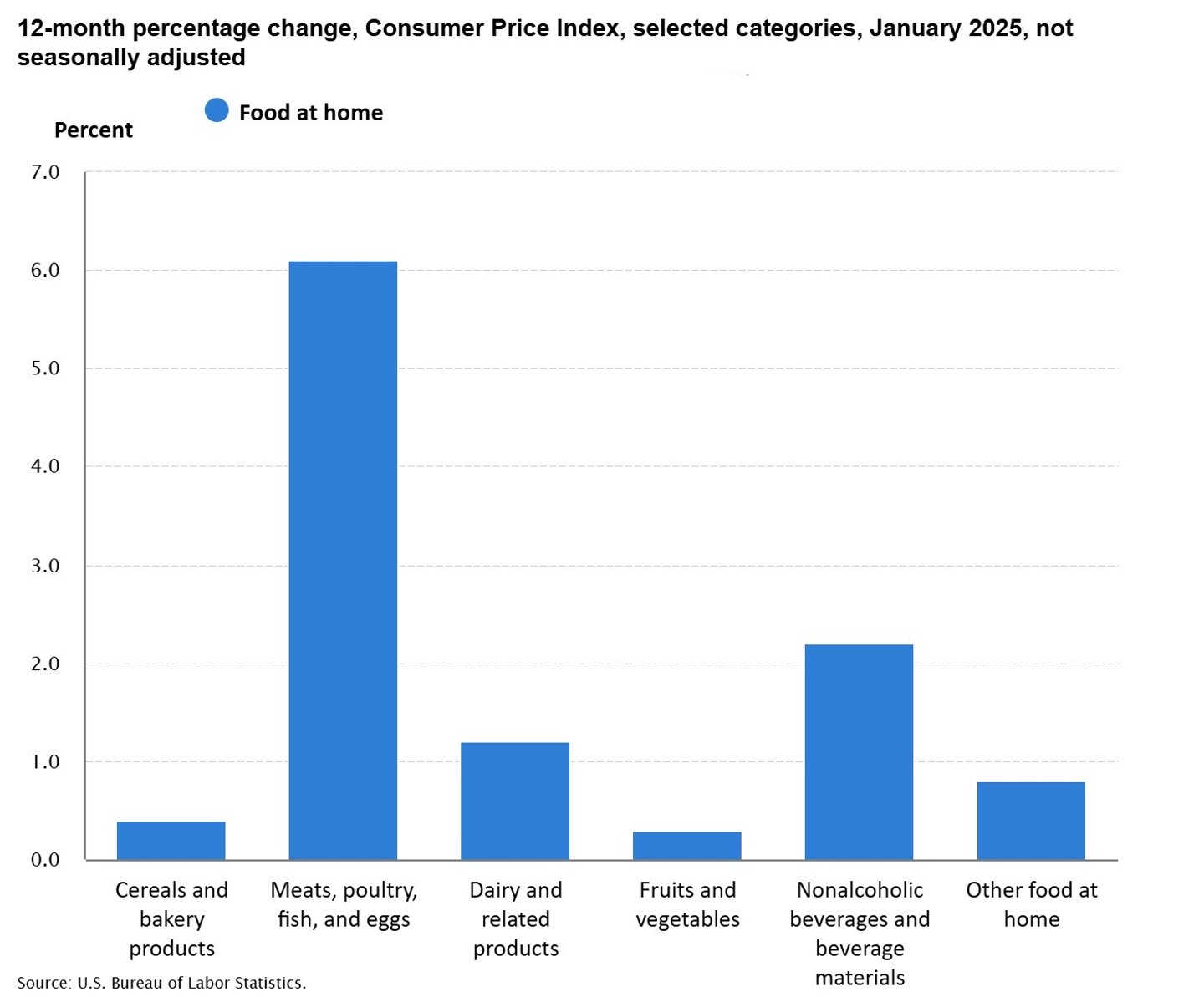Grocery Inflation Remains Frustratingly Elevated
There may be a new Administration in the White House, but the inflation refrain was familiar in January. The latest Consumer Price Index (CPI) report from the U.S. Bureau of Labor Statistics (BLS) shows that overall inflation rose 0.5% in January following a 0.4% bump in December.
Costs for energy, shelter and fuel went up, as did food. The CPI for food at home rose 0.5% last month, outpacing the 0.2% creep for food away from home.
Egg prices – which have garnered a lot of attention due to supply issues – contributed to higher grocery inflation. The index for eggs surged 15.2% in January alone, a trend that has caused some retailers to limit egg purchases in their stores.
[PODCAST - Industry Insider Reveals What’s Really Happening in Egg Category]
Shoppers paid more for products in other categories, too. The government reported that the CPI for meats, poultry, fish and eggs, collectively, rose 1.9% and the index for nonalcoholic beverages in what’s become known as Dry January went up 0.9%. The cost of dairy and related products and “other” food at home edged up 0.3% during that time span.
On the flip side, the CPI for fruits and vegetables dipped 0.5% last month. The cereals and bakery category experienced a 0.4% decline.
Looking at trends through a wider lens, grocery inflation was up 1.9% on a year-over-year (YoY) basis in the opening month of the calendar year. Categories with the biggest yearly rates were meats, poultry fish and eggs (6.1%) and non-alcoholic beverages (2.2%).
The results underscore the stickiness of inflation that has defined much of the past few years. “The CPI numbers released today represent a worrying spike in prices in several specific categories and once again demonstrate that inflation continues to be difficult to fully tame,” said Andy Harig, VP, tax, trade, sustainability and policy development at FMI - The Food Industry Association.
He continued, “Looking ahead, supply chain challenges could put additional upward pressure on food prices in the near term. The impact of wildfires out West, cold weather in the Midwest, and the ongoing avian flu outbreak bear keeping an eye on in the months to come. It also remains to be seen whether and how potential tariffs may affect the price of food and household goods going forward.”






